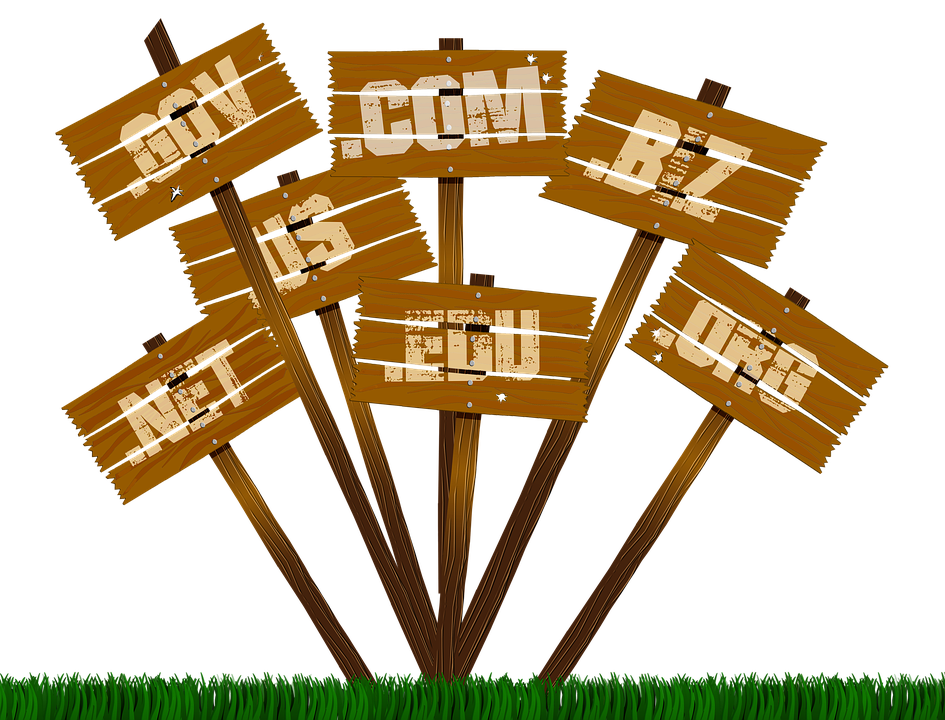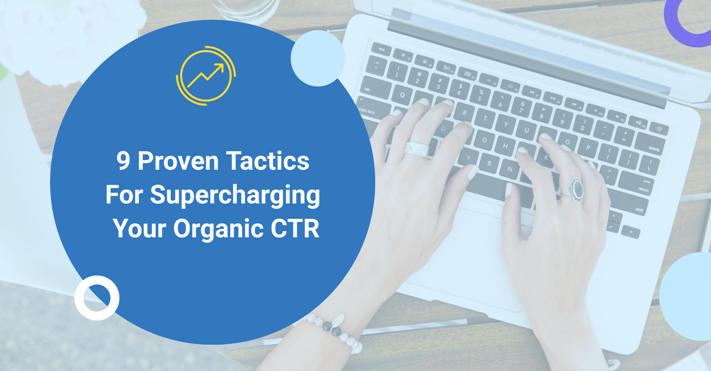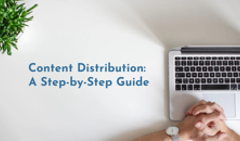Source: Pixabay
Business seems to get more and more competitive every day. You are always looking for ways to outperform your competitors and to serve your customers better. To do that, you look at using different tactics and strategies or finding new marketing tools. Some work, some don’t, and we have to tweak and change those tactics and strategies until we find something that’s right for us.
Just as we ask “what is teleconferencing going to do for us” when it comes to unifying communications, so we need to consider how other strategies can improve our business model and our customers’ experiences. These tactics and strategies are not a one-size-fits-all approach. We need different methods for different areas, systems, and processes. When it comes to getting your organic CTR (click-through rate) right, it can be a tricky process that needs some experimenting until you find the right option.
What is Organic CTR?

Source: Pixabay
Your organic click-through rate is the number of people who click through to your website in any search engine results they find. It mainly comes from your ranking position in a search but can also be influenced by other factors such as your description, URL, title tags, and so on.
Say, for example, you rank fifth for a particular SEO keyword. Over the course of a week, 1,000 people search for that word. Out of that 1,000, 100 click on your result. Your organic CTR for that word would be 10%. You may already know how to increase your email CTR, so let’s now look at improving your organic CTR as well.
Why is Organic CTR Important?
Your organic CTR rate is important—firstly, because a high CTR will drive traffic to your site, which can lead to increased conversions, sales, and revenue. High conversion product pages are a major driver of revenue. The second reason is that the main search engine, Google, uses CTR to rank articles in their SERPs (search engine results pages). So, having a good CTR helps you rank higher in search engines, which leads to a better CTR again, and so the cycle continues. The more you beat an average CTR, the higher the probability that your pages will appear in organic results. Just as an internet phone line can improve communications and save money, good CTRs will thus help to generate more leads.
The following nine tactics have been proven to help you achieve this.
Nine Proven Tactics for Supercharging Your Organic CTR
#1 Optimize Poorly Performing Pages

Source: Pixabay
You should identify which pages are performing poorly so they can be optimized. To start, work out your average CTR so you have a baseline to start. You’ll gradually look at optimizing all of your pages, but it’s best if you first look at the ones that are performing the worst.
Improving your worst pages will help raise your average CTR. Also, poorly performing pages will likely have really noticeable and fixable errors, so these should be easier to improve than a page that already performs well and needs a few very focused tweaks to improve it.
#2 Optimize Your Best Performing Google Pages
How many people only look at the first page of Google results? Around 75%. If you don’t have a result on this first page, you’ll find it very difficult to raise your CTR.
Now, this doesn’t mean you need to go back to square one and start over with your SEO. But what you should be looking at are any pages you do have on that first page. These will give you an idea of best practices if you’re hoping to improve the CTR on your other pages so they rise up in the rankings too.
#3 Create Clickable Meta Titles
Your meta tags help build a foundation for any SERP entry. People know what to expect when clicking on a link. But there are some rules to follow when creating your meta titles:
- Avoid duplication. Don’t use duplicate page titles from your own site and never copy from other sites. Duplication from your own site can cause issues for search engines not knowing what version to include in indices. If using the same titles as other sites, you may be penalized for duplicate content, and it could impact your ranking.
- Have title-matching content. If your title doesn’t correspond with the actual content, not only will you lose users, but you may also face penalties from Google.
- Character count. If your titles go over the limit of 60 characters, they will not display properly.
- Titles and keywords. Identify your best keyword that reflects what users search for and include it in your title (ideally at the start).
- Words. Include words that will grab a user’s attention. Make them relevant and appealing so people want to click on them.
#4 Create Clickable Meta Descriptions
Your meta description is as important as your title tags. You have more leeway with this, however, as the upper limit is 160 characters rather than 60.
Include keywords so users are sure your site will provide the answers they were looking for. Make sure your description matches both your page’s content and what the title tag states, too.
Here are a few tips:
- Include a call to action.
- Always ensure the meta description matches the content.
- Make sure your description is 100% unique.
- Include power words/keywords in the description.
#5 Use Simple URLs

Source: Pixabay
While a long and complicated URL may not necessarily put people off, there are some disadvantages. A shorter URL is easier for both your users and your team to copy + paste and share on other platforms.
In the actual search results, a shorter URL is more visible and can increase your CTR. It should still be descriptive, so that both humans and search engine bots can get the information they need from it.
Keep your URLs consistent across your site to make them recognizable for people. And be sure to include your target keyword in the URL, too.
#6 Optimize Loading Speeds
Your ideal loading time is between two and five seconds. But each second beyond that two second mark can cause higher bounce rates. Optimizing loading speed is not just about improving your CTR but also about the overall customer experience.
To optimize loading speeds:
- Check your page for unnecessary plugins that may be affecting the speed. If they’re not needed, remove them.
If your landing page has lots of components, try to minimize them as much as possible. Multiple components affect that all-important loading speed. - Sometimes large pages are unavoidable, but when you do have them on your site, see if you can compress them to speed up loading.
- Optimize all visual content. Smaller files don’t mean lower quality. But if visual files are too large, this will slow loading speeds.
- Check with your host. See if there are ways of upgrading to a better plan and faster speeds.
- Browser caching. If you’re updating or customizing your website, make sure to look at browser caching. This can improve both the speed and the browsing quality.
- Constantly monitor your web pages’ speed to get alerted when a problem occurs. You will be the first to know if there is any problem with your website loading time, and you can address the issues accordingly before they start hurting your CTR.
#7 Evaluate Your Wider Strategy
As you plan and implement any new strategy, remember to look beyond your site’s accessibility from desktops and laptops. With more than 50% of Internet access now coming from mobile devices, your strategy must cater to both. Thus, in addition to considering creating a mobile app to provide a better user experience, you can also leverage design flow tools to optimize the mobile user interface and ensure seamless navigation across different devices.
This is yet another element of your overall approach, which could also include updating software or office phone systems.
#8 Compare and Learn
If you find you’re still having problems raising your CTR, one great tactic is to learn from a site that is getting it right. Find your competitors who are ranking above you. Choose two or three of them and compare what they’re doing differently from you.
Look closely at the factors we’ve listed, such as URLs, meta titles, etc., and see how they differ from yours. You can then go through a trial and error stage of making changes and seeing how they affect and improve your CTRs.
#9 Rich Snippets
Search results can be about more than the factors we usually focus on (URLs, descriptions, titles, etc). Using rich snippets adds more detail to results and can capture a user’s interest. Rich snippets can consist of extra data or information and include prices of products, review scores or star ratings, images, etc.
These rich snippets will be displayed on the results page between the listed URL and the website’s description. A major advantage of including rich snippets is that it makes a listing look more attractive to users, so they’re more likely to click on a listing that includes these.
The Takeaway

Source: Pixabay
There are two things to consider when it comes to organic CTRs. The first is that this is a virtually free source of customers who will come to your site, probably for the first time, to look at your products, services, and your brand as a whole. While in other areas understanding how conversion rates affect the ROIs of campaigns is important, it matters to a lesser extent here.
The whole area of SEO, rankings, CTR, etc., is something you should be looking at on a regular basis (anywhere from weekly to monthly). Regular work in this area allows you to compare and analyze, to see what works and what doesn’t, in order to constantly improve or maintain your CTR.
Author's bio:
Marjorie Hajim is the SEO Manager for EMEA at RingCentral, a leading cloud communications company that provides VoIP and video conferencing services. She develops and executes strategies for short-term and long-term SEO growth. In her spare time, she loves reading books at coffee shops and playing with her dogs.





